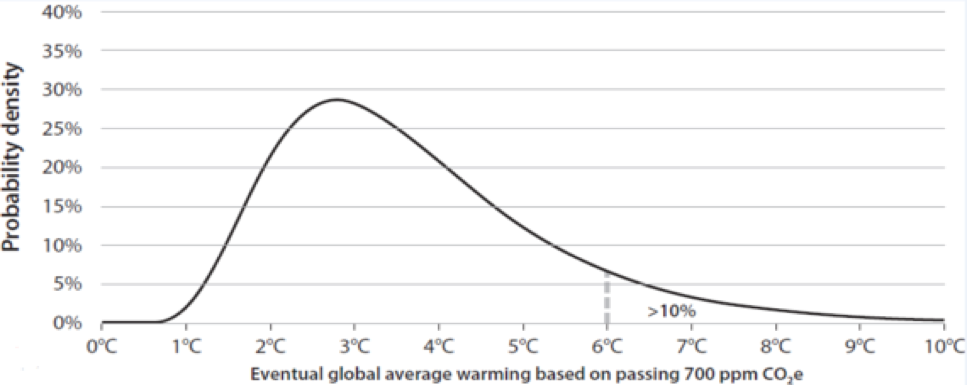The release of the Fourth National Climate Assessment report has stirred up a considerable amount of debate about the costs of climate change, and whether action or inaction will end up being the costlier approach in the long-run. Steven Koonin’s Wall Street Journal op-ed takes the view that the economic damages from climate change are relatively affordable, and that “changes in tax policy, regulation, trade and technology will have far greater consequences for American’s economic well-being.” The view that the economic damages of climate change will not amount to much, and that policies put in place to mitigate climate change should be the real cause for concern, have been echoed by Bjorn Lomborg. IER’s Robert Murphy, meanwhile, argues that the National Climate Assessment misleads the public, and that even under the grim scenario outlined in the report, “it is unlikely the U.S. will suffer extreme damage.”*
While Koonin’s claim that a 4% reduction in U.S. GDP by 2090 is not catastrophic may well be valid, the failure to seriously acknowledge the affordability of decarbonization and the inadequacy in which he deals with the uncertainty that surrounds these estimates weakens his argument.
Koonin and Lomborg specifically downplay the economic toll this kind of reduction in GDP can have, and claim that those who emphasize the costs climate change can entail are contributing to unnecessary hysteria. To add some perspective to how large a 4 percent reduction in GDP is, consider that the entire US defense budget in 2017 was 3.6 percent of GDP. Moreover, the Great Recession of 2008 reduced US. real GDP by 4.3 percent, the largest decline in the post-World War II era. I highly doubt that those authors would dismiss the economic and social harm the Great Recession had on the U.S..
Koonin concludes that the U.S. economy in 2090 would be no more than two years behind where it would have been absent climate change, but his analysis precludes a breakdown of the costs associated with mitigating climate change. The costs of decarbonization are even more negligible than expected climate damages. According to the Deep Decarbonization Pathways Project, the cost of decarbonization of the current energy infrastructure over the next few decades is expected to be .8 percent of 2050 GDP, and even at higher cost assumptions it is under 2 percent of 2050 GDP. In this context, Koonin’s 4 percent seems fairly large compared with the costs of decarbonization. However, what is of more concern than the relative costs of action vs inaction on climate change, is the way Koonin handles the uncertainty inherent in estimating these damage functions.
Koonin argues that humans’ impact on the climate is rife with uncertainty while he acknowledges that economic impacts are “less certain still,” he attributes this uncertainty to unknown modes of adaptation—and then proceeds to base his entire argument on the conclusion that an increase in global temperatures of 9˚F results in a 4 percent reduction in U.S. GDP by 2090. The uncertainty in estimating economic damages does not simply arise from yet unknown modes of adaptation, but is a result of the uncertainty inherent in modeling the very extreme temperature distributions, catastrophic tipping points, and their ensuing economic damages. Failing to consider the small, but non-negligible risks of extreme outcomes, and the staggering costs that could potentially follow, is simply irresponsible. This is the central premise of Martin Weitzman and Gernot Wagner’s insightful book “Climate Shock.”
Weitzman and Wagner argue that climate risks have fat-tail distributions, where the risks of very extreme warming outcomes fall much more slowly than your standard bell-curve, and they estimate the risks of experiencing catastrophic warming of 6˚C≤ to be around 10 percent.

Source: Climate Shock: The Economic Consequences of a Hotter Planet
The authors demonstrate that attempts to quantify the impacts of extreme warming are a practice in compounding uncertainties, essentially rendering it impossible to predict how costly damages will be. It is precisely because of how difficult these costs are to predict that climate damages could be tremendously larger than we anticipate. The fat-tail risk of climate change essentially breaks the cost-benefit analysis approach to this problem. When that view is broken, we must view climate change mitigation policy as a sort of planetary hedge to avoid these catastrophic low-probability events. That being said, it cannot be that we should spend literally any amount of money to avoid the small chance of catastrophe. However, it is even less defensible to pay nothing and ignore the risks to future civilizations.
Koonin’s dismissal of the costs of climate change in carrying no serious threat — is not only irresponsible, but highly misguided. The failure to acknowledge the possibility, as small as it may be, of staggering economic damages brought on by catastrophic climate changes render Koonin’s article to an incomplete discussion of the issue.
There is a need to consider the worst-case scenarios and accept that estimating predicted damages is at best a guess. The appropriate role for policymakers would then be to determine the least-cost approach to achieve a warming limit, rather than specify exactly what are targets should be. Addressing the inherent uncertainty in predicting the impacts of climate change is the best case for swift action, and is the fundamental reason for implementing climate change mitigation policy as a form of planetary insurance.
Image from Pixabay Stock.